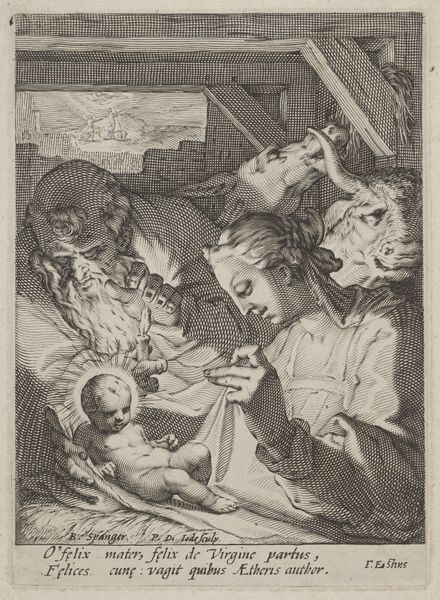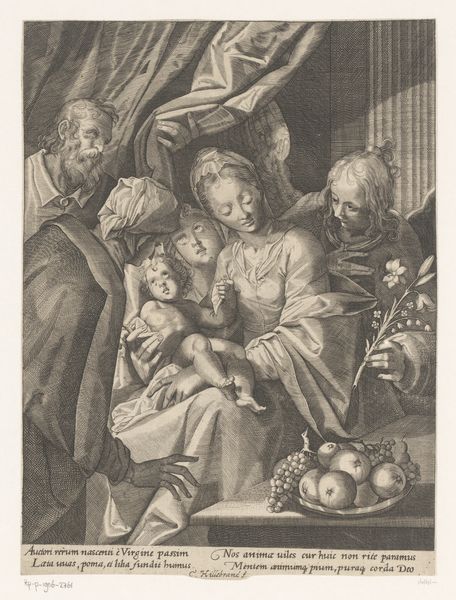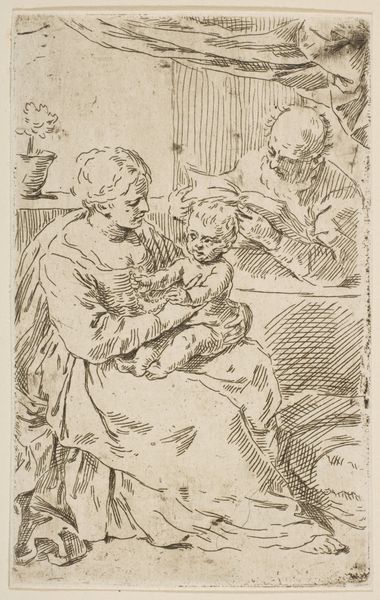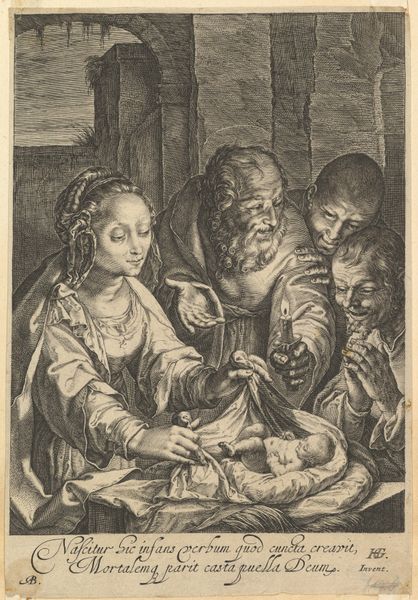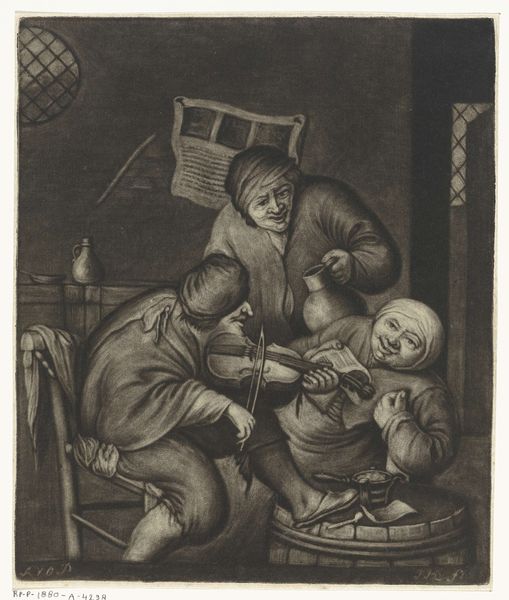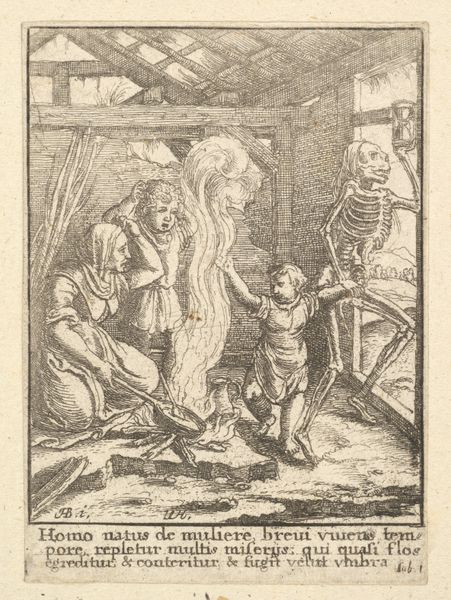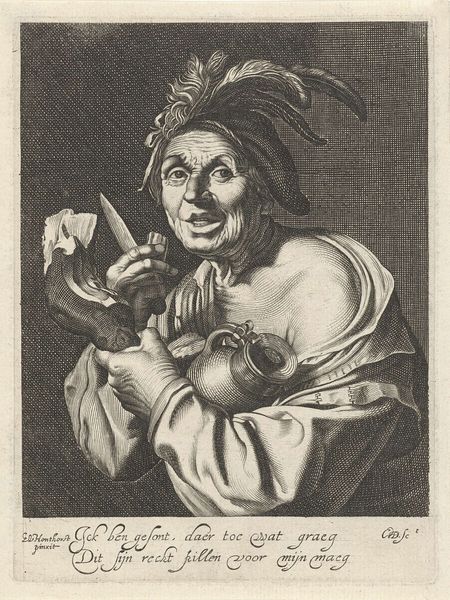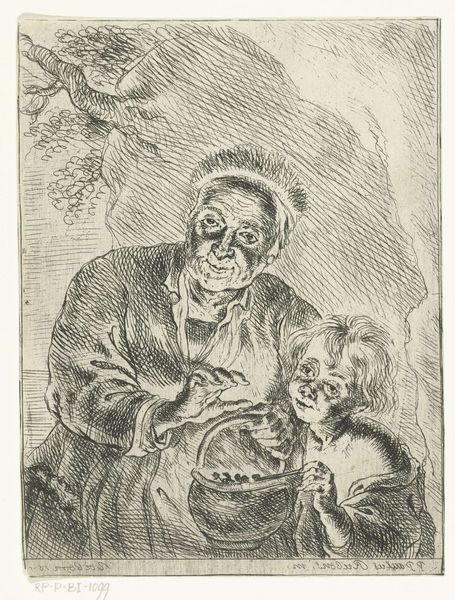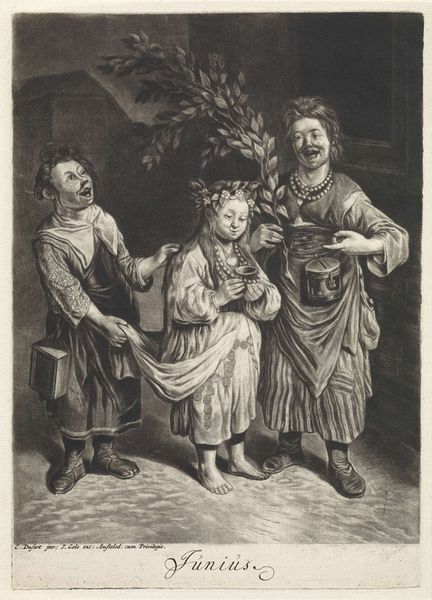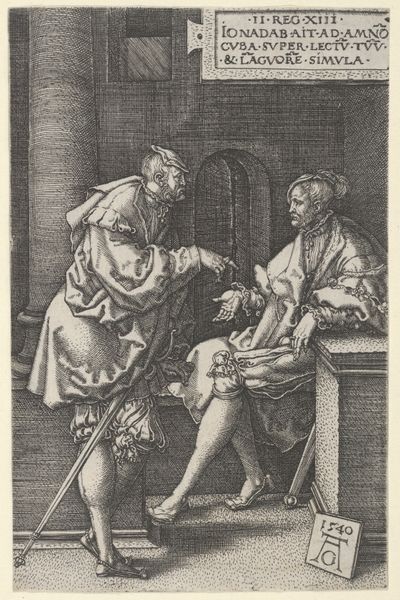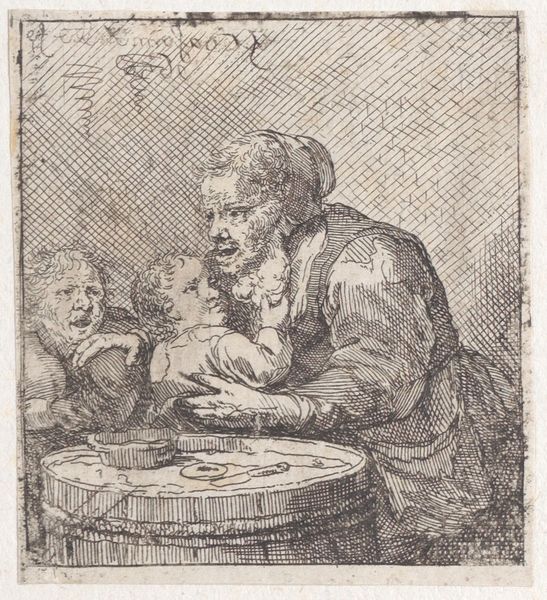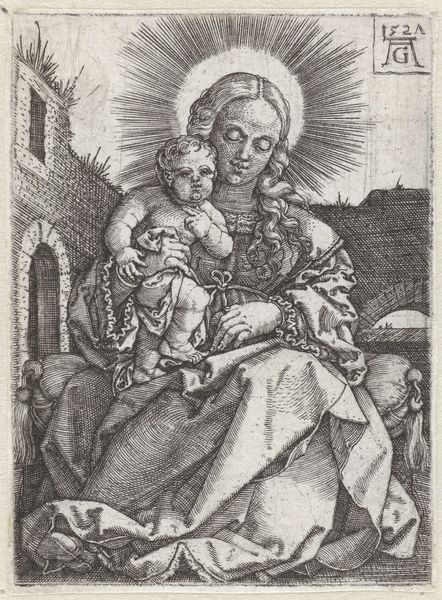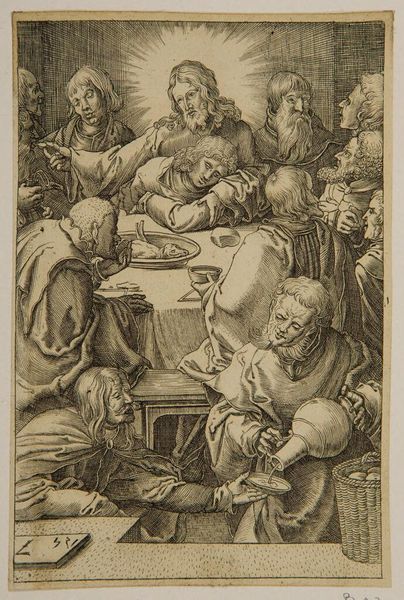
etching, intaglio, engraving
#
baroque
#
etching
#
intaglio
#
old engraving style
#
genre-painting
#
engraving
Dimensions: height 170 mm, width 135 mm
Copyright: Rijks Museum: Open Domain
Editor: We're looking at "Family at Mealtime" by Bernard Picart, dating from 1683 to 1733. It's an etching, an intaglio. The scene is...chaotic, wouldn't you say? A busy dinner table, an unhappy baby, and expressive faces. What do you see in this piece? Curator: Primarily, I notice the stark contrast created by the artist’s strategic deployment of line. The composition, tightly framed, amplifies the dynamism of the scene. Picart masterfully orchestrates visual tension by contrasting light and shadow to create an intricate web of interactions. Notice how the varying densities of etched lines generate depth. Are you taking in how the textural contrast of each element guides your eye to different areas? Editor: Yes, I'm struck by how much information is conveyed through line alone. The textures of the clothing, for instance. But beyond technique, does the arrangement signify anything in particular? Curator: Absolutely. Note the triangular arrangement of the figures, grounding the instability of the child and imbuing a classical structure within what could otherwise descend into complete disarray. The dynamism is heightened by their actions, leading the eye in and around this space. It underscores the human aspect in how we respond to domestic structure in its various states. Do you see this effect in your own interpretation? Editor: That's interesting! I was so focused on the apparent disorder, but the underlying geometry provides a sense of order. The family dynamic becomes an intentional dialogue between these structures. I had overlooked that initially! Thank you. Curator: Precisely. I’m pleased that this analytical dive illuminated something that at first you may have not noticed in this magnificent rendering.
Comments
No comments
Be the first to comment and join the conversation on the ultimate creative platform.
